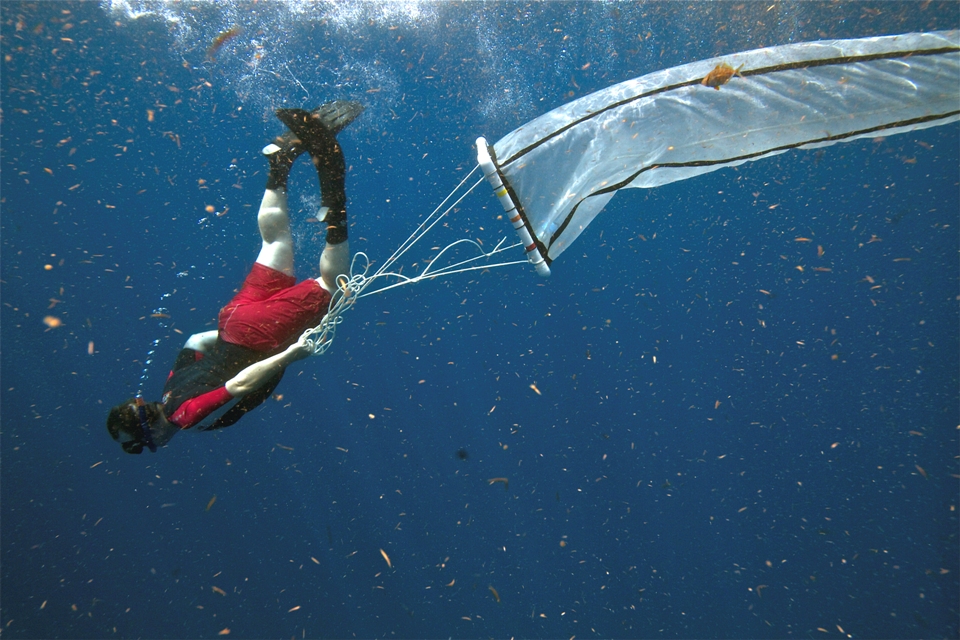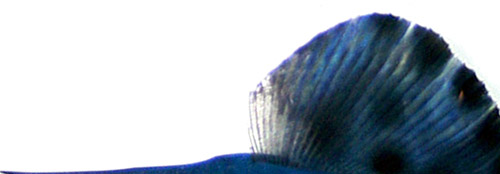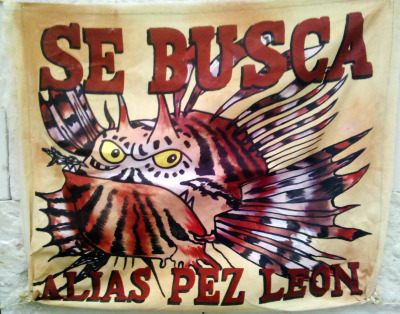Its not a tumour. Oh wait, it IS a tumour!
 Tuesday, September 14, 2010 at 3:44PM
Tuesday, September 14, 2010 at 3:44PM I admit it, I LOVE the movie Total Recall. I love its cheesy special effects, I love The Governator pulling a bug out of his brain through his nose, and I love Sharon Stone in all her over-permed 80’s pant suit glory. But most of all I love Kuato, the mysterious little conjoined-twin character who leads the Martian rebels in their fight against the Richter character (played by the terrifically melodramatic Michael Ironside) and his cronies.

Thing is, there are weirder things in the world than Kuato, and one of the all-time weirdest is a type of cancerous tumour called a teratoma. Teratoma’s take the cake in my book for the strangest and most fascinating of all pathologies, and fish get really good ones, as you’ll see.
Typically, tumours arise when a cell in the body is transformed by a mutation that interferes with the normal cycle of cell growth and death that’s essential for regulating tissues. Instead, the cell multiplies in an uncontrolled or inappropriate fashion. These mutations are sometimes built into our genes, and sometimes caused by viruses, by contaminants in the environment, by radiation, or even by spontaneous mutations from mistakes in DNA replication. Anyway, the type of tumour that develops depends on the tissue of origin, and there’s a whole taxonomy of names that describe them accordingly. For example, a malignancy in the liver is a hepatocellular carcinoma, while a cancer of the pigment cells in the skin is a melanoma.
But what happens when you get a tumour of a pluripotent or stem cell? That is, a cell that hasn’t yet decided what to be when it grows up. The answer is a teratoma. What makes teratomas so cool and gross and awesome and weird is that as the cells in the tumour multiply, they can and do turn into other different cell types as they go, which is a perversion of the normal differentiation that stem cells would go through when they are maturing into a liver cell, a skin cell or whatever. The result is a tumour that, at the tissue level, may resemble or contain one or more other tissues! My colleague and pathologist extraordinaire Jeff Wolf introduced me to teratomas when I took the AQUAVET course at Woods Hole and I was horrified and fascinated. I saw Jeff last week at the ISAAH meeting in Tampa and asked him if I could share one of his fish teratoma cases with you. So here it is:

What you’re looking at is a very thin slice of the gonads of a medaka (a type of small fish thats used a lot as a model in biomedical research) stained with haematoxylin (blue) and eosin (pink), to reveal the structure of the tissue. Ovaries and testes have a pretty high population of stem cells, so teratomas tend to be more common in gonads, but they can turn up anywhere that stem cells occur in the body. Lets take a closer look, for those who may be unfamiliar with histopathology:

I outlined the tumour in yellow. Most of the tissue surrounding it is gonad, and you can even see a few big blue oocytes scattered here and there, but you may also see how the tumour is sort of squishing the surrounding tissue. But what’s cool is all that stuff inside. The concentric structure marked 1, thats a bit of an eye - you can see the pigment layer of the retina and the alternating layers of rod and cone cells. All that stuff marked 2 that goes from 12-4 on the clock face, thats all brain tissue. The stuff marked 3, thats cartilage, and at 4, fish scales (the thin pink lines) and skin, complete with rows of mucus cells along the outside! There’s just 4 or 5 tissue types in this lesion, but it could just as easily form a bit of gut, some pancreas or a bit of kidney, anything really.
How does this happen? How can seemingly intact retina grow inside a tumour, a lesion whose very nature implies uncontrolled growth? The answer seems to lie in cell-cell signalling. As the first teratoma cell differentiated into a retinal cell, it sent out signals to surrounding cells to say “right lads, we’re forming an eye” and those cells fell into line as the lesion developed. This is a normal process thats essential for proper development of embryos, but in a perverted recapitulation, we instead get bits of intact tissue forming in tracts within a tumour. If you think its weird in a fish, wait till you see the ones in mammals: they can have bones, teeth, even fur, growing embedded within the tumour.
Teratomas: fantastically interesting and creepy, no?






